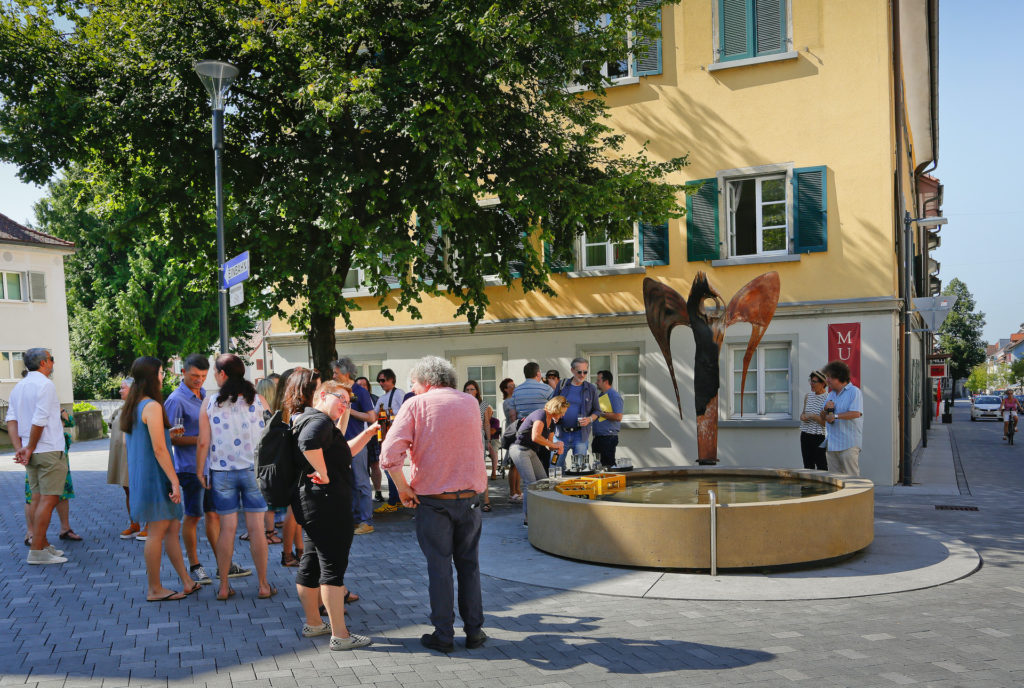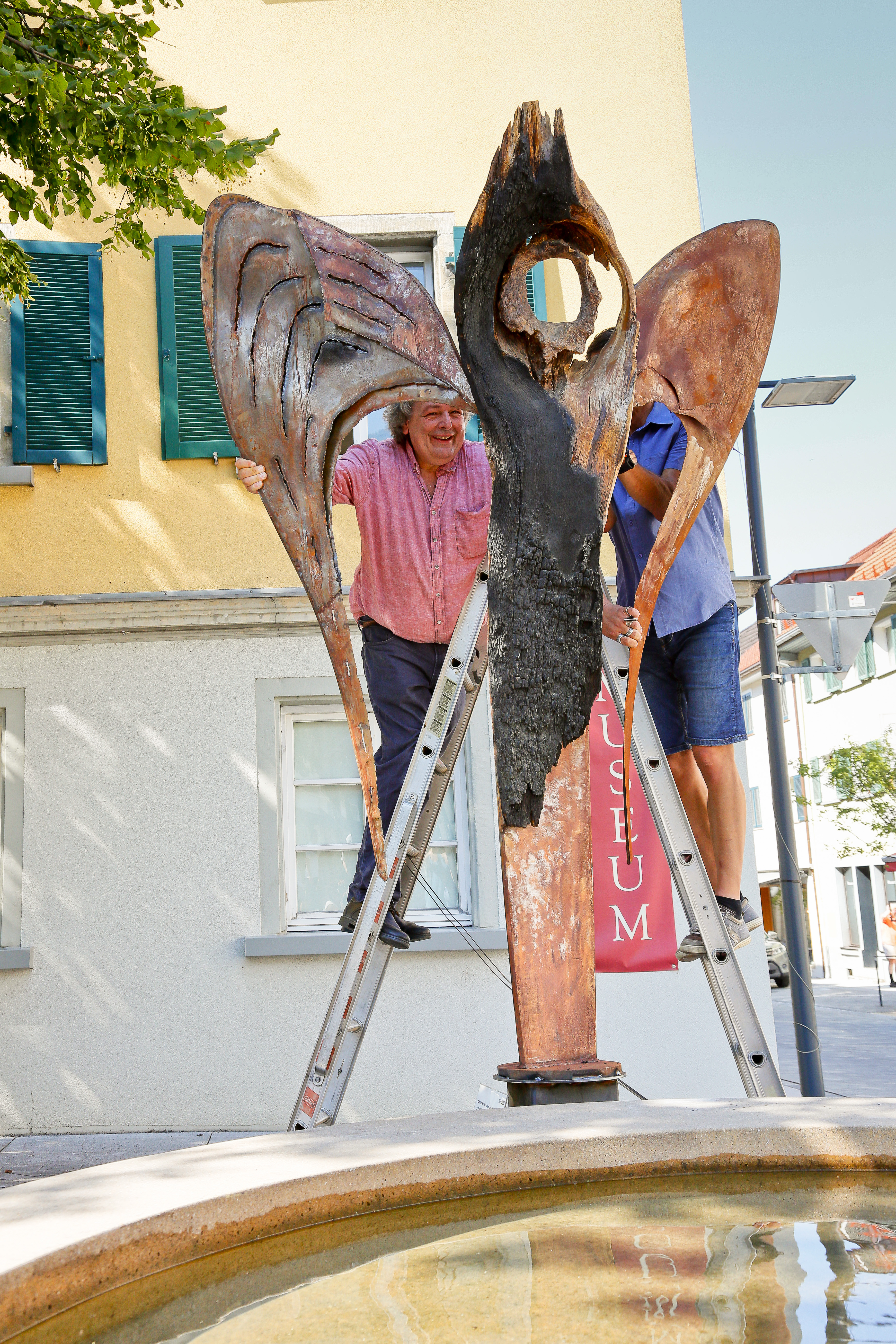European Diary, 26.9.2020: 80 years ago today Walter Benjamin took his own life in Port Bou on the border between France and Spain. He was fleeing from the Nazis, had already crossed the border – and feared being sent back to occupied France by the Spanish border guards.
A few months earlier, in May 1940, he had written to his friend Stephan Lackner in Paris:
„One wonders whether history is not in the process of forging a witty synthesis of two Nietzschean terms, namely that of the good European and that of the last man. This could result in the last European. We all struggle not to become one.“
Benjamin’s last significant text, his theses on the concept of history, saved Hannah Arendt for posterity. Since August, a sculpture by Günther Blenke has been commemorating his “Angel of History” in Hohenems, in front of the former Gasthaus Engelburg at the intersection of the former Judengasse and Christengasse. Inspired by the piece of a burnt tree into which lightning has struck.

Installation of the sculpture in Hohenems byGünther Blenke, August 8, 2020. Photo: Julie Walser
In his “Theses on the Philosophy of History” Walter Benjamin wrote in 1940:
“A Klee painting named Angelus Novus shows an angel looking as though he is about to move away from something he is fixedly contemplating. His eyes are staring, his mouth is open, his wings are spread. This is how one pictures the angel of history. His face is turned toward the past. Where we perceive a chain of events, he sees one single catastrophe which keeps piling wreckage upon wreckage and hurls it in front of his feet. The angel would like to stay, awaken the dead, and make whole what has been smashed. But a storm is blowing from Paradise; it has got caught in his wings with such violence that the angel can no longer close them. The storm irresistibly propels him into the future to which his back is turned, while the pile of debris before him grows skyward. This storm is what we call progress. ”
Thanks to Günther Blenke – and Franz Sauer, who recovered the fragment of the burnt tree in the forest..

Günther Blenke, Franz Sauer and the “Angel of History”. Photo: Julie Walser
